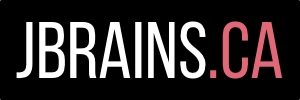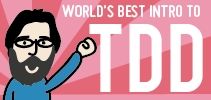Flow Requires Focus, Not Time
You’ve almost certainly heard about flow, an immersive state of intense focus during which a person often does their best, most effective, most rewarding work. I see many people use flow to justify recommending against certain working practices, like open workspaces, pair programming, and incremental delivery, arguing that people need long stretches of time to enter the flow state. Not only does working for long stretches not necessarily help me reach “the zone”, but by working in short bursts, I’ve conditioned myself to reach “the zone” quicker, and more often. I’d like to tell you what I do and how I think it might work.
The Trusted System and Getting Stuff Out Of My Head
I have noticed that my ability to enter a flow state depends more on having a trusted system for managing tasks than it does on the amount of time I spend working on any task. Flow, after all, depends on focus, and not merely prolonged, single-track effort. (I’ve “worked” on a single “task” for hours, only to realize that nothing was really happening.) This tells me to look at what I do that provides the environment in which I feel comfortable focusing. I can think of a few things.
- Articulating a next action to perform, with a clear, achievable, valuable result.
- Having a system to deal with momentary distractions while I work.
- Having a trusted system to store longer-term goals and projects, so that I don’t have to worry about whether I’m doing “the right thing” right now.
- Having a trusted system to remind me of urgent work when I need to start it.
- Working in short-enough bursts that when I happen to work on “the wrong thing”, I have frequent opportunities to switch gears and figure out “the right thing” to work on.
Maybe I can identify more, but this will do for a start. All these things make it both easy and comfortable for me to focus on one task at a time. I don’t have to worry about missing urgent tasks, about wasting time on low-value tasks, about wasting time wandering off doing things that don’t need doing at all, about losing focus when things come up—I have a system for dealing with all these things. When I decide to focus on a single task or even a single project (for several consecutive days, for example), I can give myself over completely to that work without fear that I “should be doing something else”. It’s this ability to focus, and not the amount of time I spend on any one task, that promotes flow, where I work more effectively and enjoy the work more.
Pomodoro Helps Me Reach Flow
If you believe that entering a flow state requires spending several hours single-mindedly obsessed with a task, then it might surprise you to learn that I find it easier to feel flow when I’m working in the Pomodoro Technique style. I use a tool for Mac OS called “Vitamin R” that reminds me to focus on the key steps: articulate a clear goal for the next slice of work and take a real break when the slice ends (or extend the slice by 5 minutes, but just once, in order to get stuff out of my head). I combine this with a low-tech tool: a notepad in my work area that lets me write down any potential distractions, such as “I need to do this” or “I can’t forget about that” or “What about this?!” As those thoughts leap to my mind, I can get them out of my head by writing them down, then get back to the current task.
Working in shorts bursts encourages me to clarify my goal and focus on it: I can’t just flit around from task to task—I have to focus, if I’m going to get anything useful done in such a short burst. In the years since I’ve started working this way, I have found it easier and easier to reach flow in just a few minutes. A few times per day, I am genuinely surprised when Vitamin R tells me that my work slice is over! When that happens, I occasionally need to extend the slice by five minutes—just once—to get to the end of my current microtask and get things out of my head.
Taking frequent breaks—and I mean really taking a break by getting up, walking around, making tea—helps me practise another key skill: writing things down so that I can resume work later. Doing almost anything means carrying some information in my working memory. This sometimes feels quite delicate, especially when I’m exploring options and unsure what exactly to do next. Taking breaks means that I can’t just keep all this temporary information in my head, otherwise I’d forget it, so I write it down. Writing this information down—what I was thinking, where I was planning to go next, what I was learning while I was working—makes it much easier to put unfinished work on the shelf and pick it up later. I don’t have to feel compelled to finish a project just because I’ve started it. I can switch to more urgent or more significant or higher-value work when the situation calls for it. Having confidence that I don’t need to waste time on low-value work “just because it’s easier to finish it” makes it even more comfortable for me to focus and enter flow. It becomes a virtuous cycle.
Getting Started
I could tell you my system, but then you might just copy it, and that almost certainly wouldn’t work. Instead, I can recommend a way to get started building your own system.
- Read “Getting Started with Getting Things Done” and do the exercises in order to get some of the big projects and responsibilities out of your head and onto paper. This will help you start to feel more at ease about picking a task and focusing on it.
- If you have time-sensitive things to do today, then put them on your calendar and set alarms for them that you won’t ignore. Now forget about them until you hear the alarm.
- Pick one of the urgent tasks or projects that you identified earlier and try working in the Pomodoro Technique style. Articulate a goal that you feel confident you can achieve in 40 minutes. Let it be small. State it in terms of the result you want, rather than the steps to get there. When I first started, 25 minutes seemed too short and annoyed me, so I settled on 40 minutes per work slice. (I typically do 30 minutes these days.)
- Get some pen and paper (or use a text editor, if you must) to keep beside you as you work. When distracting thoughts come to you, take 15 seconds and write them down. Do this no matter how small they seem. Do this even if it’s something you intend to do next. As you write them down, forget about them.
- Now work on the task and forget about everything else.
- At the end of the work slice, write down anything that you’re afraid to forget while you take a break.
- Take a real break. At least get up and walk around. Take 5-10 minutes, unless you feel exhausted, in which case, come back when you feel ready.
- Repeat until it’s close to time to stop working.
- At the end of the day, take a single sheet of paper and rewrite anything from your notes that you’re afraid to forget. Leave this page on your work area so that you see it when you start work the next day.
- Enjoy your time off work and forget about work. Let your subconscious work on whatever it finds interesting.
If you do this for a few days, you’ll notice notes piling up, and you’ll need a system for organizing things like long-term projects, medium-term projects, short-term projects, urgent tasks, and so on. Put time-sensitive things on your calendar, and put the rest in the emerging trusted system that you started when you read “Getting Started with Getting Things Done”.
If you like where this is going, then you might want to read Getting Things Done to learn some more good tricks for working worry-free and spending more time in a state of flow. As far as I can tell, how much time I spend on a task has almost nothing to do with flow. When I feel comfortable focusing, flow just happens.
I Forgot Something…
In this article I ignored one key aspect of flow: enjoyment. This likely reflects my mood more than anything else. When I become engrossed in a task, then the work generates enough energy for me to counter whatever stress I feel from some aspects of the work. This excess energy from my enjoyment or absorption in the work makes it that much easier or more likely to reach a flow state, even in a relatively short period of time. I like to think of the advice in this article as applying even if you don’t feel any particular conscious, abstract enjoyment from the work. If you enjoy the work for its own sake, then flow probably comes more easily; and if you don’t, then these tricks might help train you to achieve flow more often, more quickly, and more easily than you can now.
References
Mihaly Csikszentmihályi, Flow: The Psychology of Optimal Experience. The authoritative reference on flow.
J. B. Rainsberger, “Getting Started with Getting Things Done”. If you don’t want to read an entire book just yet, this will give you a head start.
David Allen, Getting Things Done. When you need more guidance about building a trusted system for managing your work, this book will help you start.
Jim Loehr and Tony Schwartz, The Power of Full Engagement. This book describes the importance of managing energy, not time. I find that the more time I spend in flow, the less energy I need to do work.
Staffan Nöteberg, Pomodoro Technique Illustrated.


